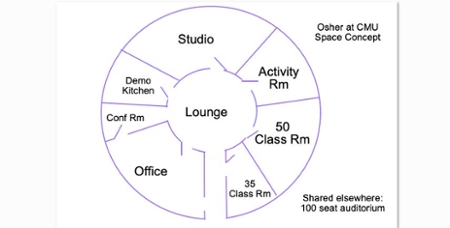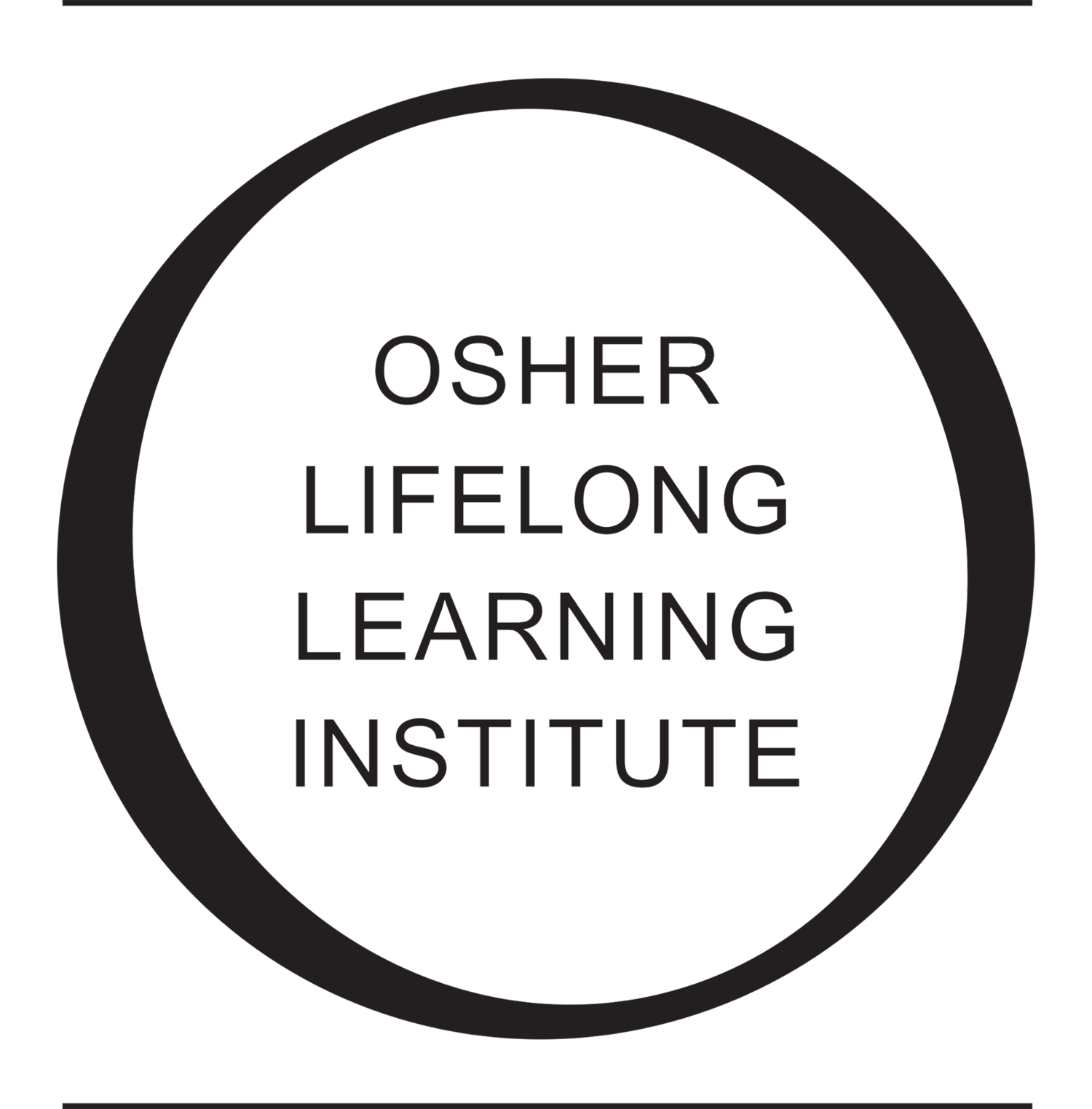
Quest for Space on Campus
By John Olmsted
Not so fast. Administrator's offices in Warner Hall are so small that one is almost embarrassed to ask for space. When I recently explored the 4600-4700 wing of Wean, I was bemused to find offices assigned to faculty in Psychology, Music, and Modern Languages as well as the Dietrich College. Despite its many buildings, CMU is not spacious. This is the context within which Osher at CMU has been seeking better facilities.
Space has always been at a premium at CMU. For its first nine years, the Academy for Lifelong Learning operated from the basement of Alumni House, aka "the Dungeon". It relied on the University to provide classroom space; the course catalogs specified, "Classroom locations will be furnished later." The University provided a dedicated classroom in 1996, and the ALL office moved to Hunt Library in 2002. Nevertheless, ALL's tenth-anniversary history reported "Today, ALL is approaching 825 members, about as large as campus classrooms and parking capacity can accommodate."
Then came the Osher endowments. The University allocated a second dedicated classroom to our program, allowing us to grow to our current size of 2500 members. Our waiting list of almost 800 would allow us to grow still further, but the current CMU administration has made it clear that 2500 is "about as large as campus classrooms and parking capacity can accommodate."
Our current space allocation is 2000 square feet, divided between two classrooms in Wean Hall and the office complex in the Hunt Library. Barely adequate in 2002, this space is now inadequate in four respects. The Osher office is in a different building than our two main classrooms, our courses are spread over multiple venues, we use off-campus sites that are inconvenient, and - most importantly - we have no central locale for socializing.
In 2015, Osher President Joe Shirk presented a proposal for additional space to then-Provost (and now University President) Farnam Jahanian. That proposal had five components: Space sufficient for Osher’s needs, a Lounge that encourages socialization, Consolidation into a single location, Accommodation of the needs of members who are impaired, and Sharing of Osher space with the CMU Community. We have reiterated that request yearly since then.
How might the ideal Osher space look? A circular design illustrates the essential features. A lounge is at the hub and connects to all the other components: the office, a conference room, two standard classrooms, an activity room for Learn by Doing courses, a studio for physical activity courses, and a demonstration kitchen for culinary courses. We would also have access to an auditorium with a capacity of 100 or more.
A location for this "ideal" space does not exist, but its main features could be realized in at least three locations on the CMU campus. A number of years ago, it was suggested that the second floor of the Hunt Library would be ideal for the Osher program. About a year ago, CMU proposed allocating to Osher additional space in the 4600-4700 wings of Wean Hall. Last September, Osher responded to a Request for Proposals to make use of hitherto unassigned "shell space" on the first floor of the new Tepper Quad.
Unfortunately but realistically, space allocation decisions at CMU are part of a complex web of program needs and wishes. Final allocations are made at the highest administrative level, and our most recent information from on high summarizes the current situation: "With the transition to a new Provost, we do not have any solutions to your space quest at this time." While waiting for Provost Garrett to settle into his position, Osher continues to explore all the possibilities and hone our arguments in favor of being allocated space in a highly desirable location.
Our proposal for the shell space in the Tepper Quad emphasized the vision of the ideal environment for interconnected learning expressed by trustee and donor David Tepper: "Imagine a place where current and prospective students, families, alumni and community members come together to be a part of the CMU experience." We emphasized the perfect match between the Tepper Quad, as an environment for interconnected learning, and the Osher Lifelong Learning Institute at CMU. Osher members are mature adult learners drawn from CMU alumni and community members, two of the constituencies identified as coming together to be part of the CMU experience. Our facility would include flexible study areas that Osher would make available to be used by CMU students when our program did not need them.
Placing Osher at CMU in the Tepper Quad would allow us to realize the major goals of our space requests: sufficient space for our robust life-long learning programs, designed to facilitate adult learning in a single, central location, with a lounge that encourages socialization and easy access for our members. This space is much better than other space options, but we must bear in mind that many CMU units probably are competing for this highly desirable space.
If not Tepper, then where? The Hunt Library second floor could easily be refitted as the rectangular equivalent of the ideal circle, but it seems that there are practical obstacles to this idea, including where to house the books that are presently on this floor and competing ideas for using this space to meet needs of the growing cadre of undergraduates at CMU. The space that we have been offered in the 4600-4700 wings of Wean Hall is insufficient to allow us to realize our space goals. We have yet to receive a response to our request for additional space as well as the ability to schedule some of our high-demand courses in one of the larger CMU classrooms.
If not in 2019, then when? A year ago, we were hopeful that a space allocation would be made before the end of 2018. That did not occur, and the transition in CMU's academic leadership means that space decisions probably will not be announced before mid-Spring. The design and outfitting of new space requires at least a year to 18 months. An optimist might hope for new facilities to be in operation by late 2020; a realist can hope for mid-2021.
Wherever Osher is ultimately located, the outfitting of our new quarters will require a robust funding project to raise the funds to pay for that outfitting. We have established the Osher 4.0 program to plan that project and are working to complete its infrastructure so that we can launch our funding effort on the day after we know where we will be and what the likely cost will be.
The Osher 4.0 Steering Committee recently had a luncheon to seek advice from, and share our space plans with, our three outstanding Founding members who remain active: Marcia Frumerman, Ed Landerman, and Helen-Faye Rosenblum. Part of the program was a short PowerPoint presentation that concluded with the optimistic refrain from the West Side Story song: "Somehow, some day, somewhere."
